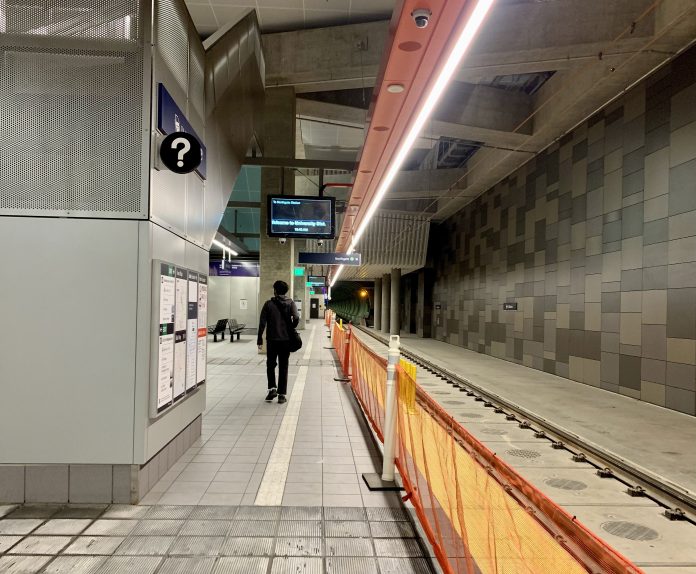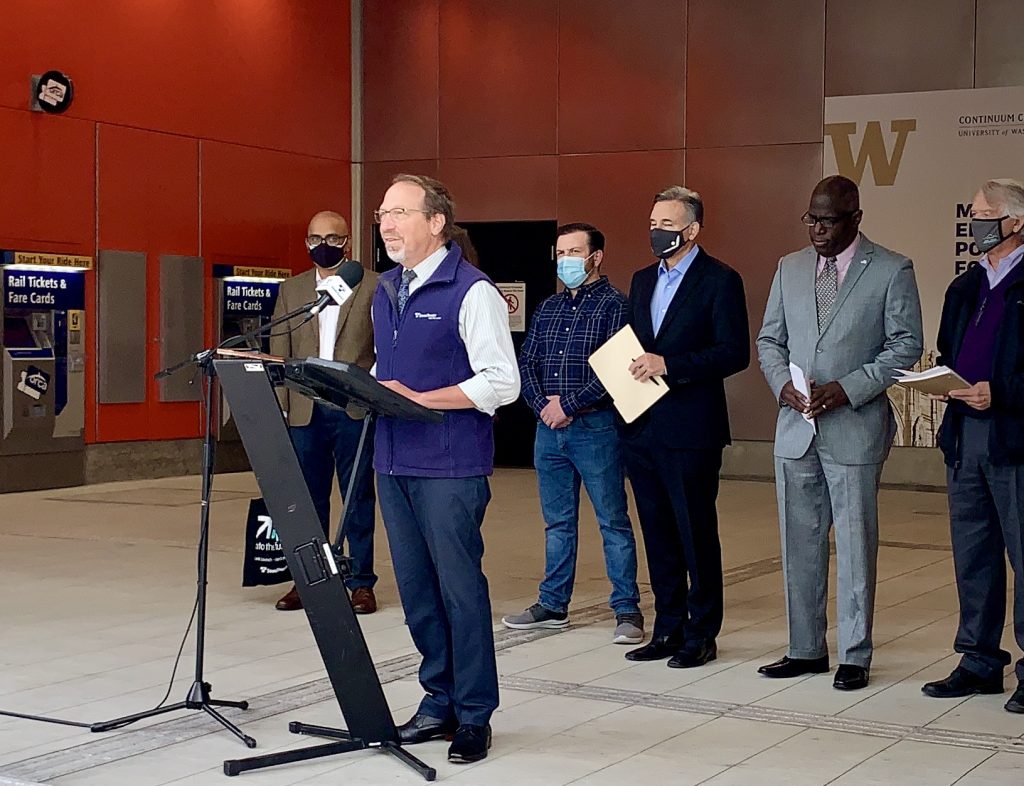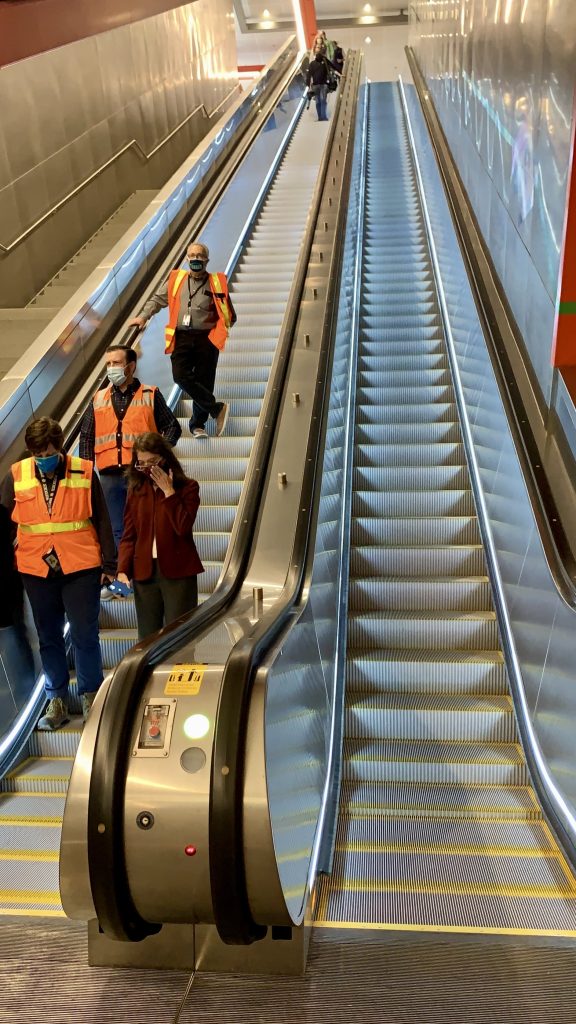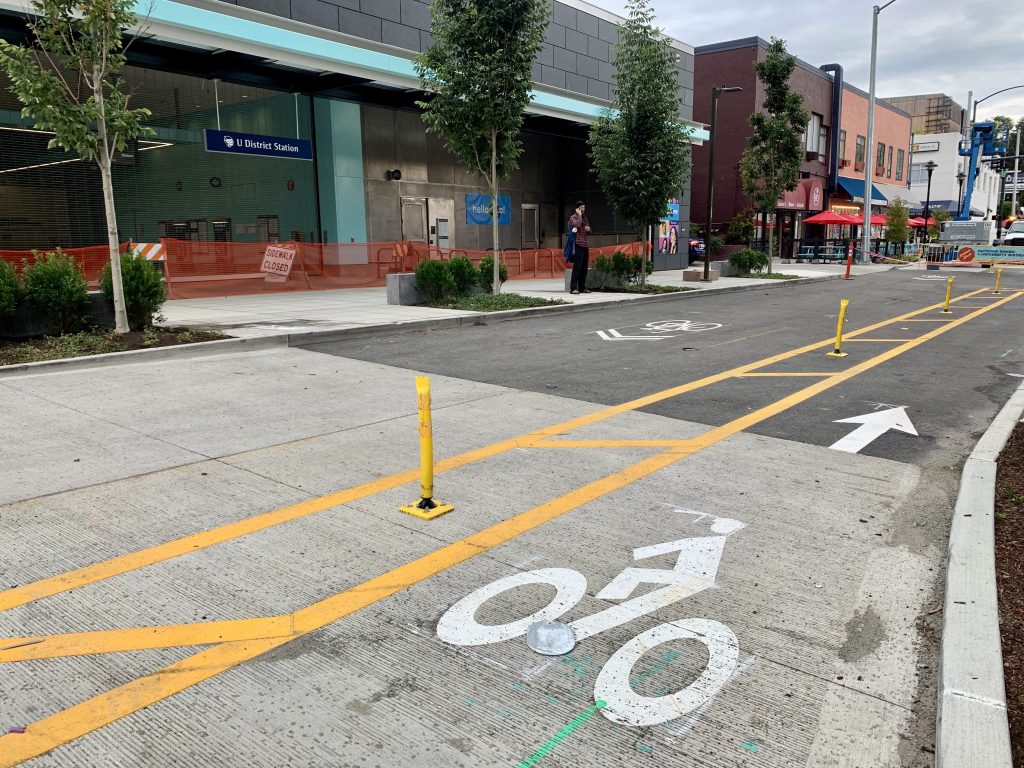After opening to the public on October 2nd, the U District Link light rail station is expected to receive the lion’s share of the 50,000 daily riders that the three new stations on the Northgate Link extension are projected to add. However, it was pretty quiet as a group of Sound Transit boardmembers, agency and King County employees, and journalists assembled to get a first glance inside the station. A few passersby questioned when the station was opening, visibly excited about the arrival of light rail to one of Seattle’s densest neighborhoods. The design by LMN Architects for the station architecture, Swift Company for the landscape architecture is definitely attracting attention. (To learn more about the U District station design, check out this article written for The Urbanist by Stephen Fesler.)
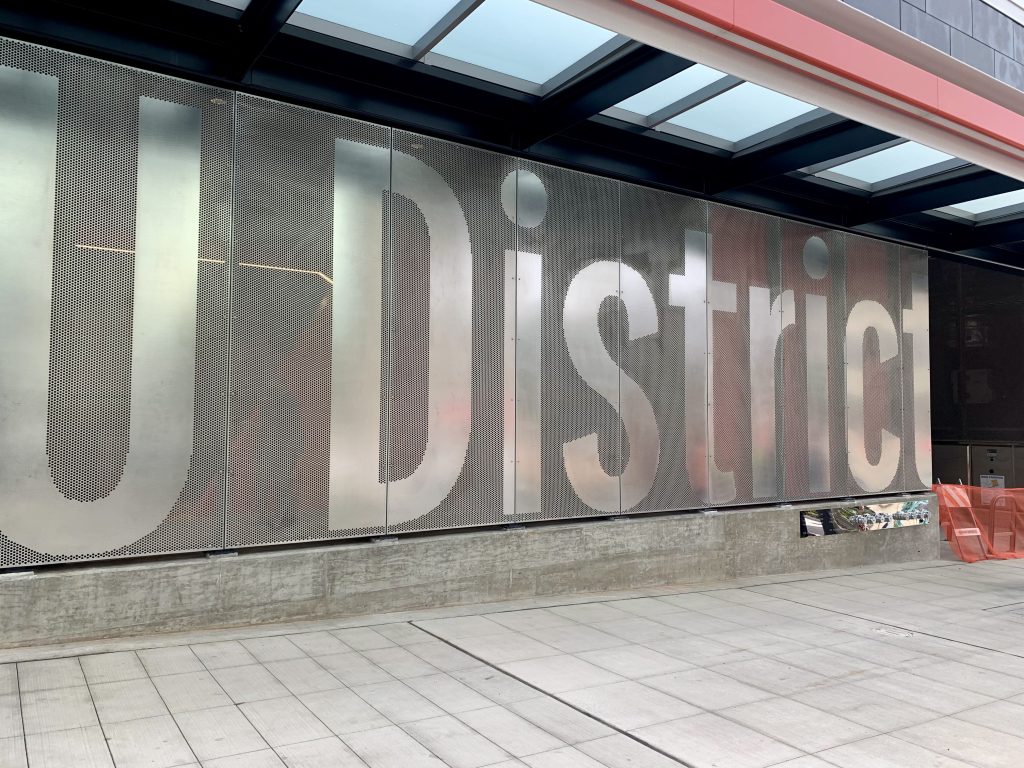
Before entering the station, a series of speakers from Sound Transit and King County spoke about the success of the Link light rail expansion. Peter Rogoff, Sound Transit’s Chief Executive Officer, kicked off the event by providing an overview of agency’s regional expansion plans. He also shared an anecdote from Alex Hudson, Executive Director of the Transportation Choices Coalition (TCC), who as an experiment recently took the bus from U District Station to Westlake Station in Downtown Seattle. According to Hudson, the trip took about 40 minutes; once light rail opens the same journey will be shortened to a mere eight minutes.
Rogoff was followed by King County Executive Dow Constantine, who reminisced about the difficulty of finding parking back in the day when he was a working college student living in a U District apartment building a stone’s throw from the light rail station. Constantine used his personal story to emphasize how light rail expansion means more King County residents will be able to get to work affordably and conveniently. Kent Keel, University Place Councilmember and Sound Transit Board Chair, spoke with excitement about the planned opening for Sound Transit’s Hilltop Tacoma Link extension, which is slated to open six new stations in Tacoma in 2022.
The presentation also highlighted the extensive engineering that went into making sure that physical and electromagnetic vibrations and from Link light rail do not interfere with sensitive research going on at the University of Washington campus. Shankar Rajaram, the Sound Transit Rail Vehicle Engineering Manager, shared how a series of floating slabs made out of a highly absorbent concrete blend prevent vibrations from passing light rail trains from impacting their surroundings. Over 40 monitors set at 300-foot intervals across the 3,800 feet where light rail trains pass under the university campus will work continuously to verify systems are working properly. Sound Transit also installed ultra-straight rail, which is used in European high-speed rail systems, to make the ride even smoother. “Frat parties will make more noise and vibrations than light rail will,” Peter Rogoff joked.
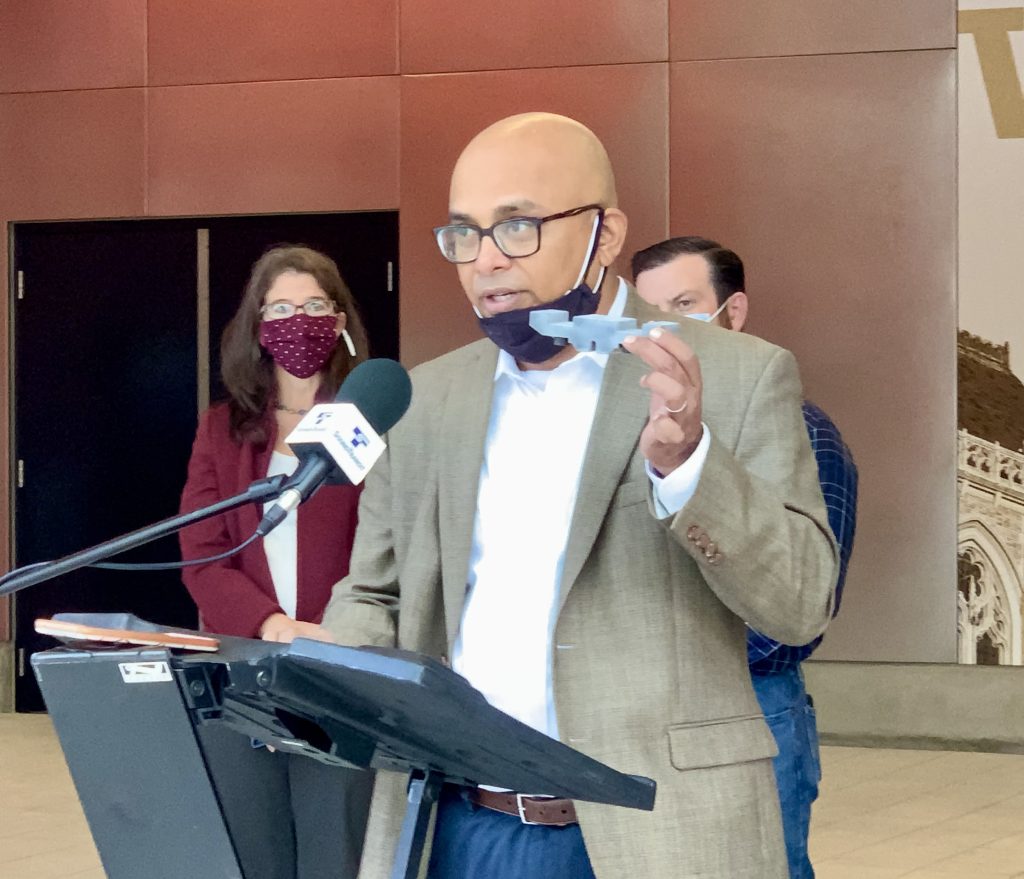
Once inside, it was clear that aesthetically the station shares a lot in common with the existing Capitol Hill and University of Washington Stations. After entering, riders will need to descend to the station platform using either the elevators, stairs, or escalators. The first escalators and stairs are long and steep, leaving the rider at a raised platform looking down at the tracks.
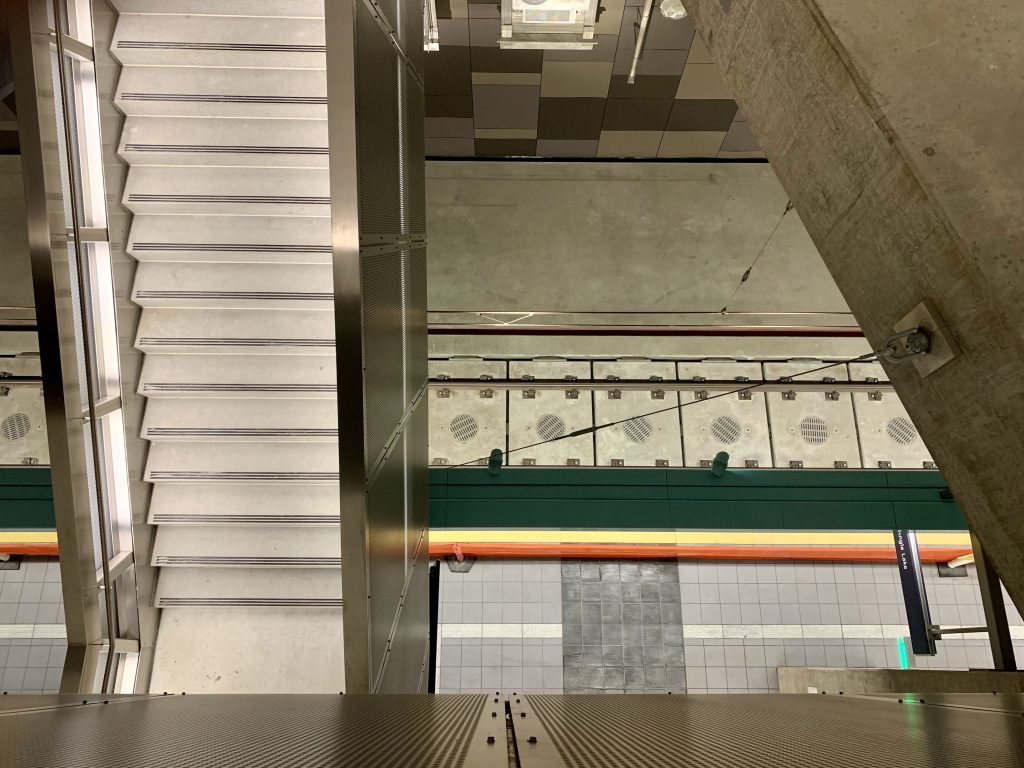
The second set of stairs and escalators are shorter and leave the rider directly on the platform where they can select to travel north toward Northgate or south toward Angle Lake.
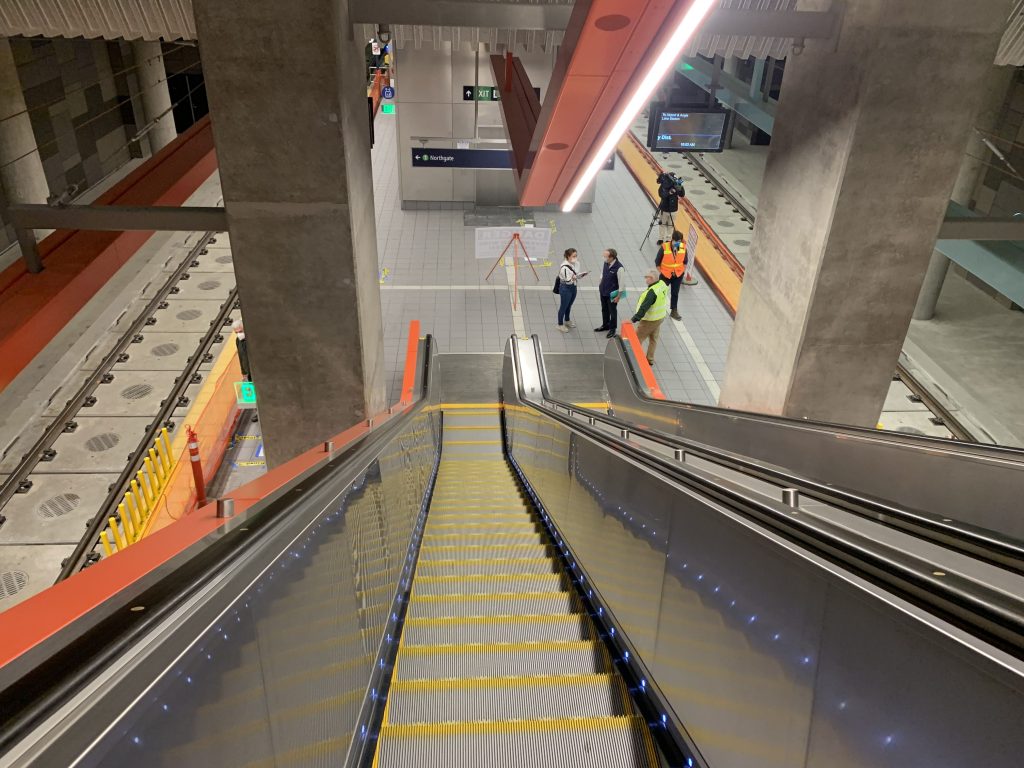
During our time meandering around the platform, empty Link light rail test trains came and went. Sound Transit has been running test trains on the line for 20 hours each day since August 16th. This simulated service is being conducted for safety and troubleshooting purposes.
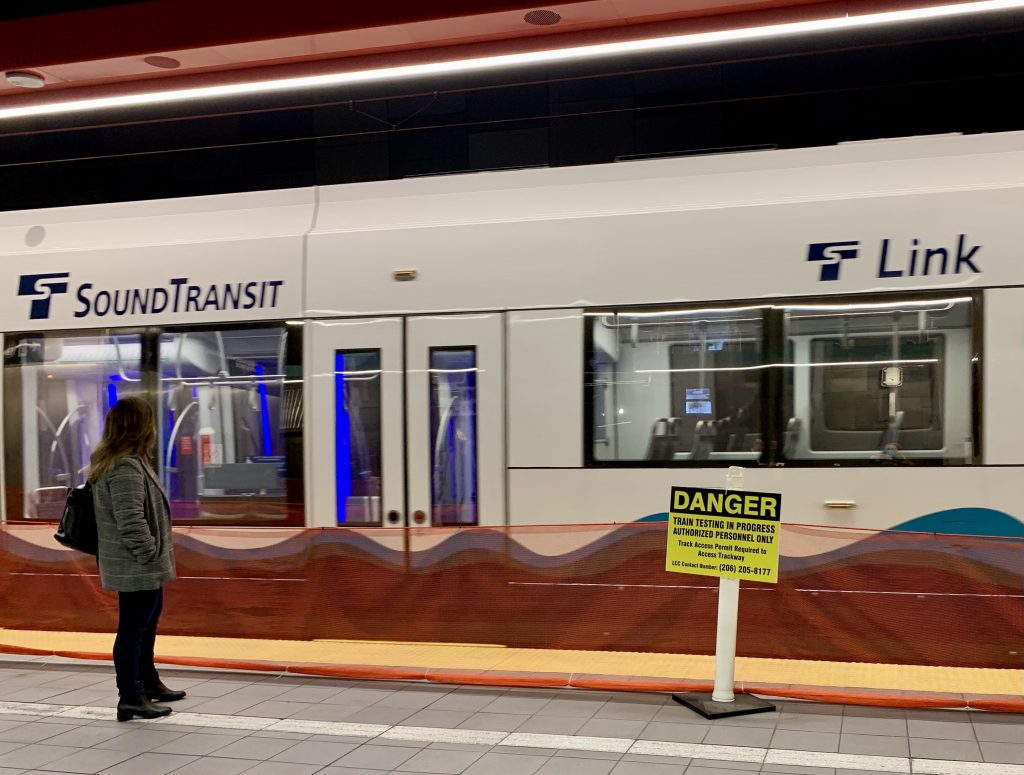
Similar to many subway systems, there was a continuous breeze on the platform provided by the tunnel’s ventilation system. The station designers chose to incorporate an art installation amid the vents and fans installed on the metal station wall. Completed by Lead Pencil Studio, the sculptures are intended to represent “architectural fragments” of window frames, rooflines, and fire escapes.
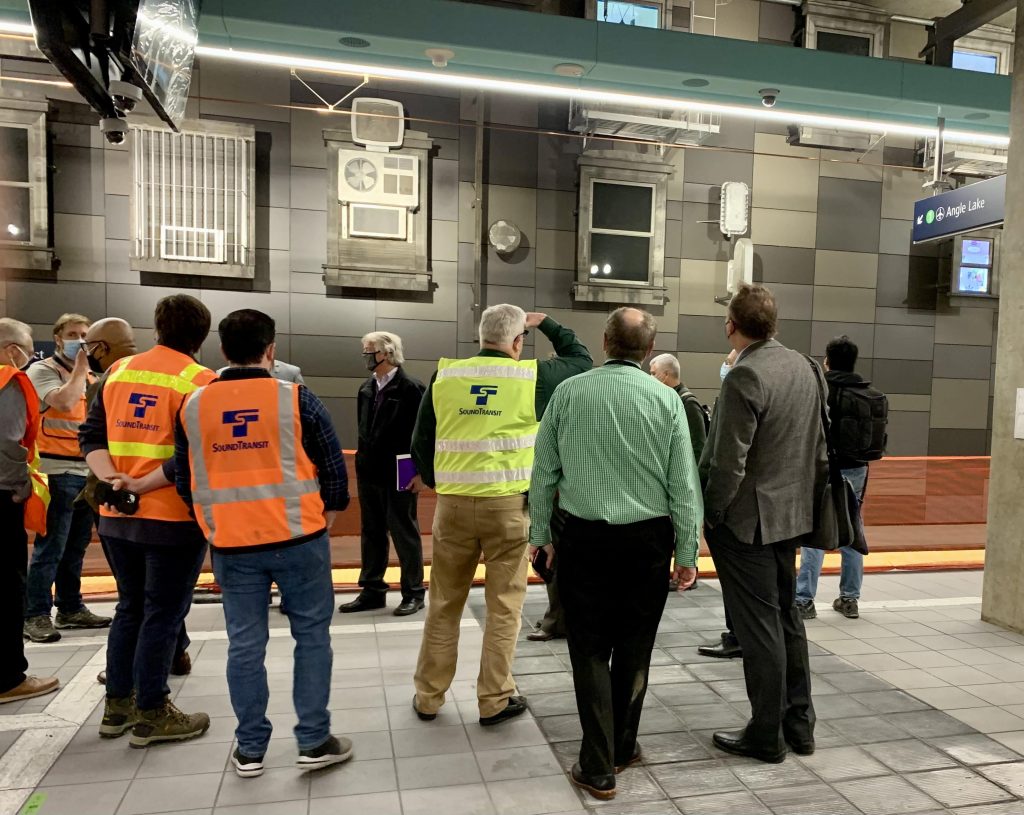
For the most part, signage has been installed, with wayfinding tips and information about the station area, connecting King County Metro bus routes, and bike routes all posted, along with reminders for rules for riding Link. (No riding your hoverboard in the station!)
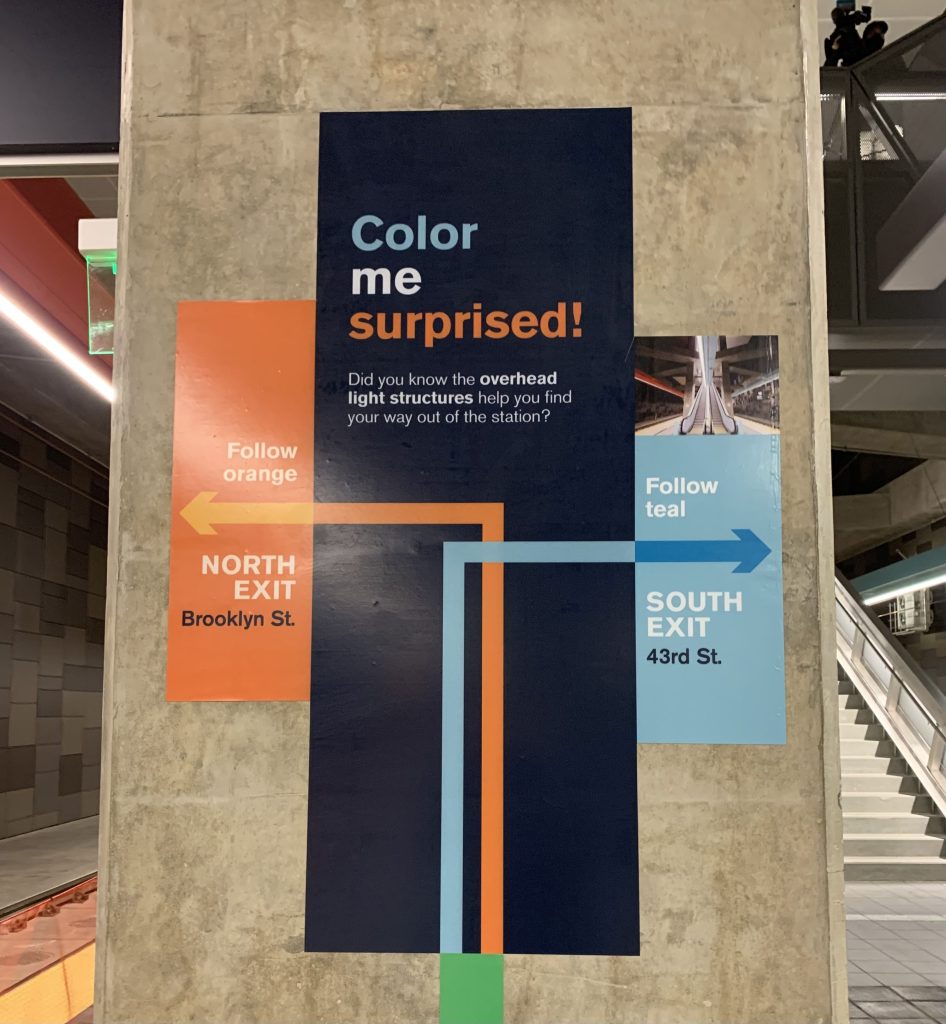
A few small details remain to be completed, however. During our visit, some tiles had been recently set on the platform and overhead wiring was being installed. Sound Transit staff also mentioned that additional signs and wayfinding elements remained to be installed.
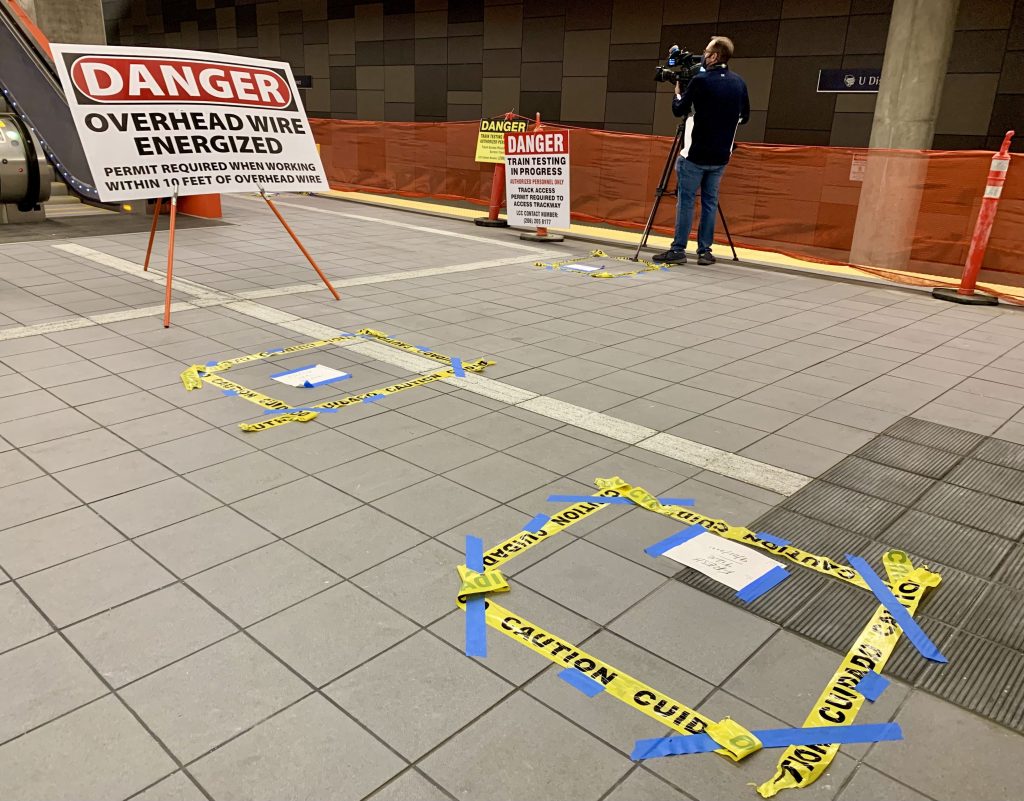
Outside of U District Station, it’s clear that the surrounding neighborhood has already been impacted by the arrival of light rail as construction cranes hover overhead. An empty lot, owned by the University of Washington, sits between the two station structures. In the future, the lot will be the site of a transit-oriented development, which will be occupied by the University of Washington. A 13-story office building is currently in the permitting process.
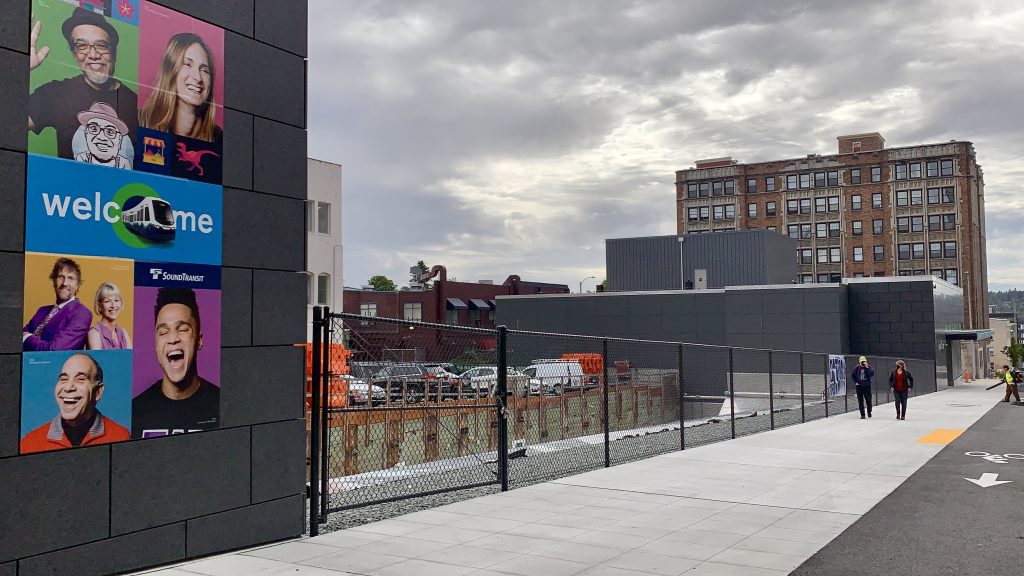
NE 43rd Street, located on the south end the U District station, has already undergone a design transformation in response to the arrival of light rail. Intended to make it safer for people to walk, bike, and roll to Link light rail, the street redesign features curbless streets, a protected bike lane, extra wide sidewalks, and a transit-only lane.
The street will be the site of a U District station opening festival on October 2nd from 10am to 8pm, featuring a $3 food walk, beer garden, live music, and activities for kids.
This article has been updated to include the names of the station architects (LMN Architects) and landscape architects (Swift Company).
Natalie Bicknell Argerious (she/her) is a reporter and podcast host at The Urbanist. She previously served as managing editor. A passionate urban explorer since childhood, she loves learning how to make cities more inclusive, vibrant, and environmentally resilient. You can often find her wandering around Seattle's Central District and Capitol Hill with her dogs and cat. Email her at natalie [at] theurbanist [dot] org.

